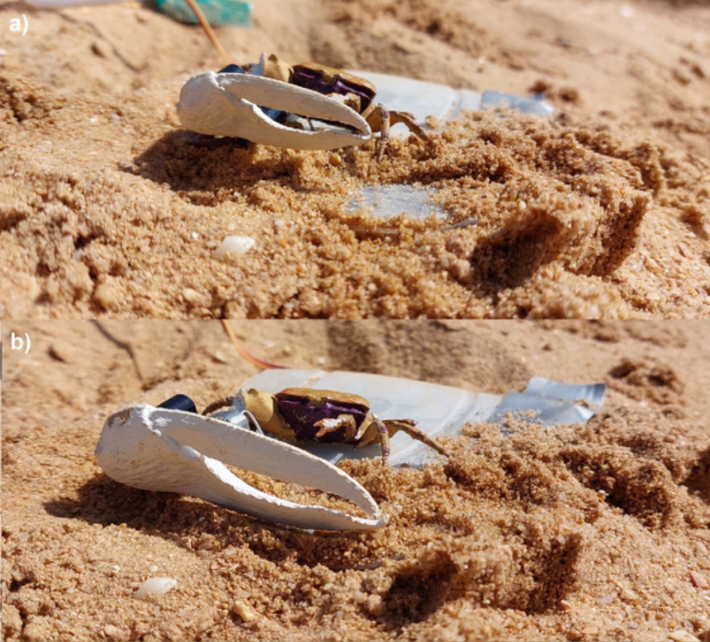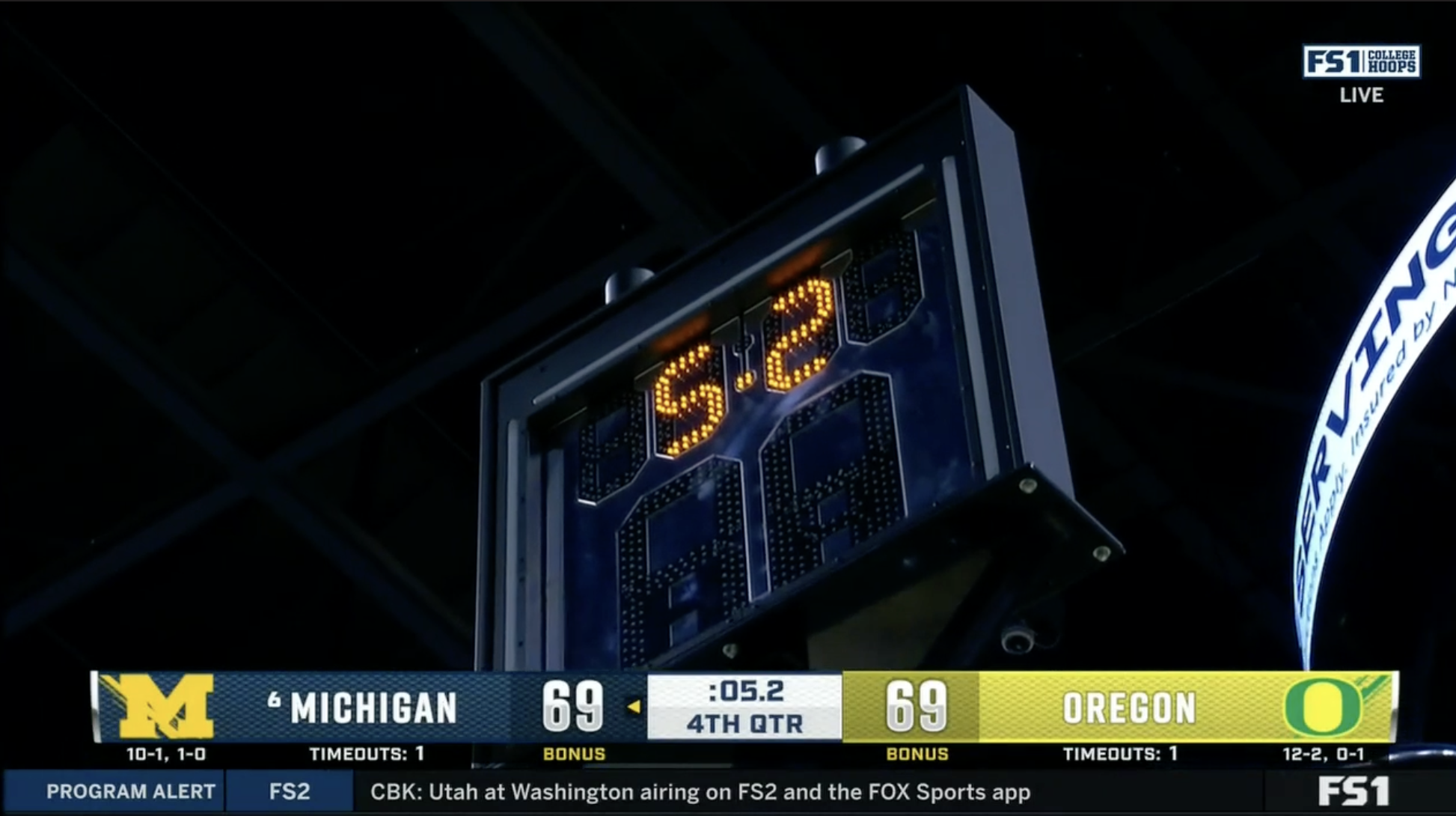Anyone who ever met Wavy Dave and lived to tell the tale—which is, in point of fact, everyone who has ever met Wavy Dave—would tell you about his claw. It was big, that's for certain, but this was not unusual for male fiddler crabs, which wield one enormous front claw, much larger than its counterpart. This is what gets the the female fiddlers going: a large claw that can wave back and forth quickly; the kind of claw that sends a message. These major claws can comprise more than 30 percent of a male's total body mass, which is a big burden on such a little crab. But if a female likes the size and motion of a male's claw, she may enter his burrow and let him fertilize her eggs.
But Wavy Dave's large claw, according to those who've seen it, kept growing larger. On the first day he scuttled into town, his claw was nearly two inches from base to tip. But the next time he came 'round these parts, his claw was even bigger. If you'd had gotten close enough to measure it, you'd find it had grown to a whopping 2.7 inches, making it the largest major claw on record for the species Afruca tangeri. You might think twice before crossing Wavy Dave.

Although Wavy Dave is the hero of our story, he is a fiddler crab only in form, not flesh. He sprung into being from a 3D printer held in a library in Exeter, England. Shortly after his creation, a doting scientist painted him with acrylic, giving him the appearance of a real crab, and dubbed him Wavy Dave. The scientist printed Wavy Dave's two major claws—large and record-setting—and wired them to a miniature motor, which enabled Wavy Dave to fulfill his purpose and wave his claw up and down, just like a real A. tangeri.
Wavy Dave was created for one purpose. He was not made to while away the rest of his days in a library. He was destined for the mudflats of the Ria Formosa Natural Park in southern Portugal. Here, low tide exposes the muck and sand of the salt marsh, a perfect place for crabs to roam. Here, Wavy Dave would be challenged by the real male fiddler crabs defending their muddy burrows. The scientists selected one male, a feisty crab already waving his claw outside his burrow, and plugged the other burrows with bundles of pickle weed, ensuring it would be a true duel, mano a mano, crabo to crabo. This rival, after sauntering up to Wavy Dave and his mechanical claw, attempted to unseat his plastic opponent. But Wavy Dave won this round, begging the question: Can a robot crab with no mouth experience the sweet taste of victory?
Once a handsome stranger, Wavy Dave's reputation heightened after each showdown. He may have been a rookie, but he proved he was a force to be reckoned with in the crab big leagues even with a relatively modest claw. The researchers found the rival crabs behaved differently depending on what Wavy Dave did. They were more likely to stay above ground when Wavy Dave was waving, especially when Wavy Dave's claw was smaller than theirs, which these rival crabs knew would be less attractive to females. The male crabs waved for longer, but not faster, if they had Wavy Dave in their sights. Wavy Dave, it seemed, had burrowed into their minds and set a fire under their many legs. But, of course, not even the world's greatest champion can win every fight. When Wavy Dave lost, he did so with dignity; though his claw was toppled, his little motor waved on, undeterred.
Sometimes, the crabs didn't come to blows, or rapid dismemberment. Sometimes the rival and Wavy Dave stood their respective ground, their claws talking for them. Although these stand-offs never rose to the level of physical altercation, any other crabs passing by would have felt a ruthless chill in the air and, if they were smart, scuttled off to safety.
As the sun set over Wavy Dave's final duel in the summer of 2022, he was packed up and left the Portuguese mudflats as suddenly as he had arrived. The crabs crawled out of their plugged-up burrows and scanned the horizon for signs of this mysterious stranger who had galloped into their community and attempted to woo its females. What did the rival males make of all this? Did they shake their claws into the sunset? Did a single tear slowly drip from their eye stalks? This is how the ballad of Wavy Dave comes to an end.
Who was Wavy Dave when he was no longer waving? For one, he was the first 3D-printed crab to star in a paper published in Proceedings of the Royal Society B, a fact that is probably equally unimpressive to most people as it certainly is to most crabs. But, Wavy Dave might have mused if artificial intelligence was real and bestowed upon him, perhaps the mark of a real crab is not a chitinous skeleton or even life itself, but rather the fact of being perceived as a crab by other crabs. Perhaps this offered Wavy Dave solace, wherever he has gone. He never become a real crab or a real boy, but, for two months of one brilliant summer, he lived as one.
And what of our intrepid antihero? He left no notice of his next steps, and no one has seen him since. He may have returned to Exeter and been shoved into some cardboard box on some dusty shelf. But the old-timers say that on quiet moonlit nights out on the Portuguese mudflats, if you screw up your eyes just right, you can still see him waving to this day.







